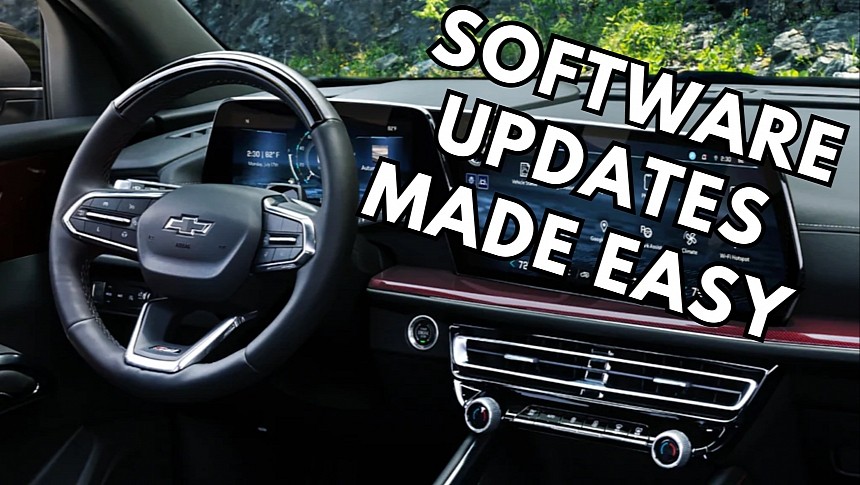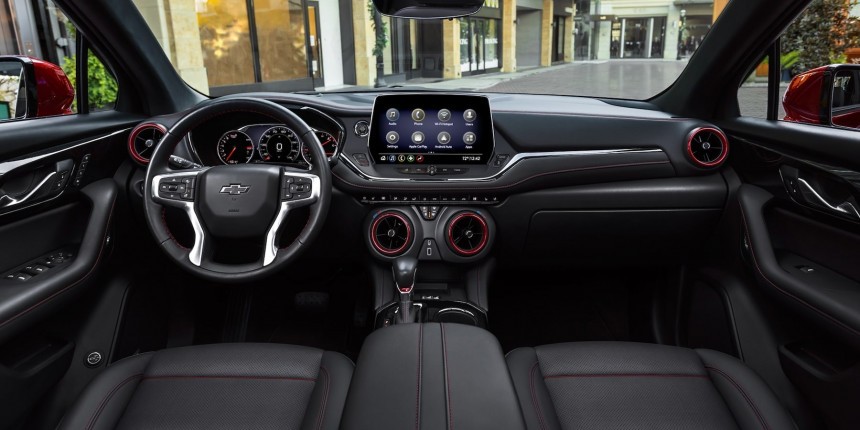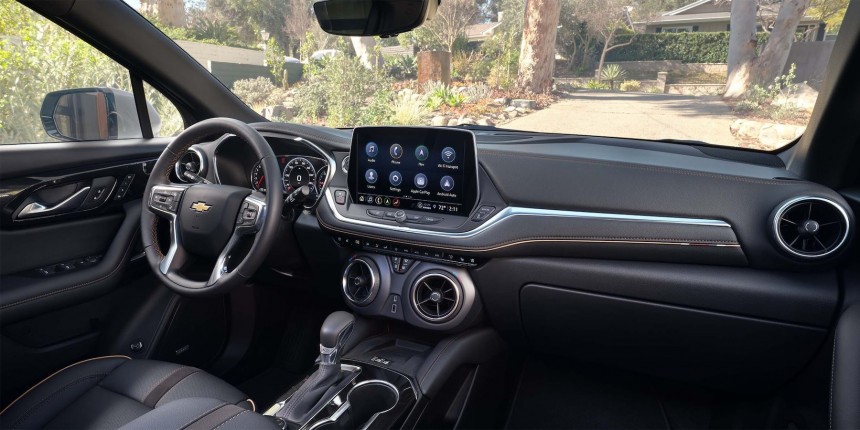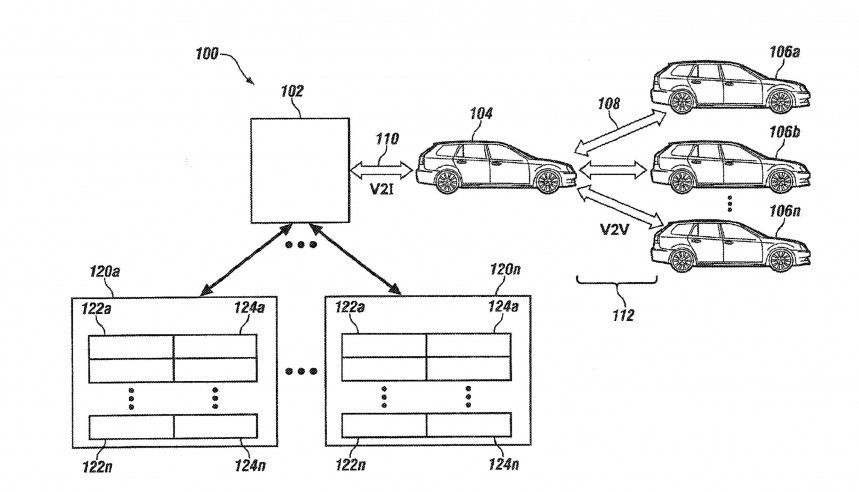Delivering software updates to vehicles has so far proved to be a major challenge for carmakers despite investing in the development of new technology to enable over-the-air releases.
Carmakers have never been software masterminds, and the death of OEM infotainment is living proof. Most companies picked Android Auto and CarPlay to replace their lazy software efforts, so it's no surprise they're now struggling to reinvent themselves at a time when technology is integral to every vehicle.
Software is critical for a new-generation car, and carmakers want to ship improvements, bug fixes, and new features in a timely manner. Over-the-air updates could help, but the lack of Internet connectivity turns the concept of installing new software remotely into a major struggle.
General Motors has a new idea, and it provides a full look at it in a new patent called "vehicle software updating technique."
Before delving into GM's patent, let's have a look at a similar technology that most of us used more than a decade ago.
BitTorrent is a protocol that allows peer-to-peer file sharing over a network. The clients don't connect to a server but establish direct connections to download and then serve the files to other clients. The device that offers the files is known as a seeder. Clients connect to the seeder and download the files, after which they become seeds for other clients.
The more seeds, the bigger the download speed and the file availability.
BitTorrent has long been criticized for supporting illegal software distribution, especially as famous trackers allowed clients to download movies, games, and music.
The American carmaker proposes an approach for delivering software updates to vehicles using an approach that reminds of BitTorrent.
The patent acknowledges the struggle with software updates, admitting that "issues arise when a vehicle has not been brought in for service over extended periods." If OTA updates are not available, carmakers must find a way to deliver the new software to these vehicles.
General Motors explains that vehicles can be fitted with special hardware to allow for file transfers, turning them into source and destination vehicles.
The source vehicles run the latest software versions, whereas destination vehicles use an older release and, therefore, need updating. In other words, GM would convert the vehicles on the road into seeders and peers, allowing them to communicate for file transfers.
The file distribution process begins with an automatic check for the latest software version. A vehicle can connect to another vehicle specifically to compare software versions. It can request the update files to install the new release if an older version is found.
The system tries to estimate the file transfer speed and the duration, as the wireless communications channel must remain available to complete the transfer. Technically, a peer-to-peer (or vehicle-to-vehicle) transfer could be interrupted and resumed when the connection is re-established, but General Motors wants to avoid it specifically to reduce the likelihood of corrupted files.
A vehicle can check for newer software versions when sitting at a traffic light or waiting in a parking lot for charging. If the transfer can be completed in a timely manner, the destination vehicle begins the download, receiving the update from the source vehicle. The destination vehicle can initiate the update using the received files when the download is complete. Sometimes, the update won't be triggered until the vehicle is parked safely, especially if the new version includes code for critical systems.
General Motors explains that the connection can include multiple clients. A destination vehicle doesn't have to connect directly to a source vehicle but uses other vehicles to communicate and initiate the software version check.
Imagine you're sitting in a parking lot waiting to pick up the kids from school. Your car needs a software update but isn't close enough to the source vehicle to download the files. GM's system determines that the update isn't possible, so it connects to another vehicle, which in turn connects to the source vehicle, acting as an intermediate in charge of receiving and sending the files to the client device. The vehicle network can eventually send the update files to any car running an old version and close enough to receive the new version.
GM's idea would make more sense if all vehicles on the road, regardless of the carmaker, would use a universal communication protocol, as with BitTorrent. In the BitTorrent case, software developers could create their clients, such as uTorrent, to allow users to download and share files using the same protocol. GM's technology would be subject to major limitations if it ends up limited to the company's cars, eventually becoming less useful if not enough new-generation vehicles are in proximity.
GM's system is still in the patent stage, so you'd better not hold your breath for a mass-produced version. You can find the full patent application under the jump.
Software is critical for a new-generation car, and carmakers want to ship improvements, bug fixes, and new features in a timely manner. Over-the-air updates could help, but the lack of Internet connectivity turns the concept of installing new software remotely into a major struggle.
General Motors has a new idea, and it provides a full look at it in a new patent called "vehicle software updating technique."
The BitTorrent protocol
BitTorrent is a protocol that allows peer-to-peer file sharing over a network. The clients don't connect to a server but establish direct connections to download and then serve the files to other clients. The device that offers the files is known as a seeder. Clients connect to the seeder and download the files, after which they become seeds for other clients.
The more seeds, the bigger the download speed and the file availability.
BitTorrent has long been criticized for supporting illegal software distribution, especially as famous trackers allowed clients to download movies, games, and music.
General Motors' BitTorrent-like technology
The patent acknowledges the struggle with software updates, admitting that "issues arise when a vehicle has not been brought in for service over extended periods." If OTA updates are not available, carmakers must find a way to deliver the new software to these vehicles.
General Motors explains that vehicles can be fitted with special hardware to allow for file transfers, turning them into source and destination vehicles.
The source vehicles run the latest software versions, whereas destination vehicles use an older release and, therefore, need updating. In other words, GM would convert the vehicles on the road into seeders and peers, allowing them to communicate for file transfers.
The file distribution process begins with an automatic check for the latest software version. A vehicle can connect to another vehicle specifically to compare software versions. It can request the update files to install the new release if an older version is found.
A vehicle can check for newer software versions when sitting at a traffic light or waiting in a parking lot for charging. If the transfer can be completed in a timely manner, the destination vehicle begins the download, receiving the update from the source vehicle. The destination vehicle can initiate the update using the received files when the download is complete. Sometimes, the update won't be triggered until the vehicle is parked safely, especially if the new version includes code for critical systems.
General Motors explains that the connection can include multiple clients. A destination vehicle doesn't have to connect directly to a source vehicle but uses other vehicles to communicate and initiate the software version check.
Imagine you're sitting in a parking lot waiting to pick up the kids from school. Your car needs a software update but isn't close enough to the source vehicle to download the files. GM's system determines that the update isn't possible, so it connects to another vehicle, which in turn connects to the source vehicle, acting as an intermediate in charge of receiving and sending the files to the client device. The vehicle network can eventually send the update files to any car running an old version and close enough to receive the new version.
GM's idea would make more sense if all vehicles on the road, regardless of the carmaker, would use a universal communication protocol, as with BitTorrent. In the BitTorrent case, software developers could create their clients, such as uTorrent, to allow users to download and share files using the same protocol. GM's technology would be subject to major limitations if it ends up limited to the company's cars, eventually becoming less useful if not enough new-generation vehicles are in proximity.
GM's system is still in the patent stage, so you'd better not hold your breath for a mass-produced version. You can find the full patent application under the jump.












